The Type of the IProperty is represented by ClrType property. It handles correctly both real properties (having PropertyInfo), fields (EF Core 5.0+ allow mapping fields as properties), and also shadow properties which have no assocaited PropertyInfo or FieldInfo at all.
var tableType = _dbContext.Model.GetEntityTypes().First(c => c.GetTableName() == tableName);
foreach (var property in tableType.GetProperties())
{
Type type = property.ClrType;
}
Now speaking about string representation of that Type, it is arbitrary (similar any formatting) and depends on your needs. For instance, for debug display purposes EF Core internally uses the ShortDisplayName method. You can eventually use it, but note that it uses C# built-in types (e.g. int instead of Int32) and formats nullable type as "Nullable<{TypeName}>" e.g.
Requires
using Microsoft.EntityFrameworkCore.Infrastructure;
and then
var tableType = _dbContext.Model.GetEntityTypes().First(c => c.GetTableName() == tableName);
foreach (var property in tableType.GetProperties())
{
var type = property.ClrType;
var typeName = type.ShortDisplayName();
}
Again, converting Type to string differs, and depends on what this string will be used for. So use Type instead of string where possible. GetColumnType is different - it returns string because there is no class similar to Type to represent the database provider types.
